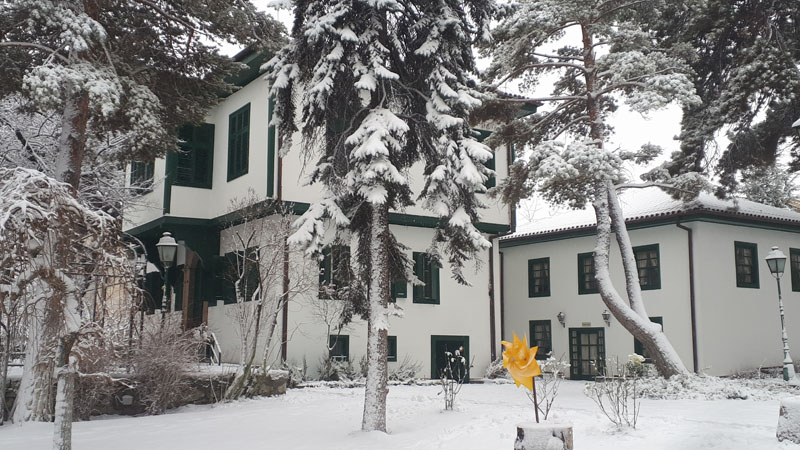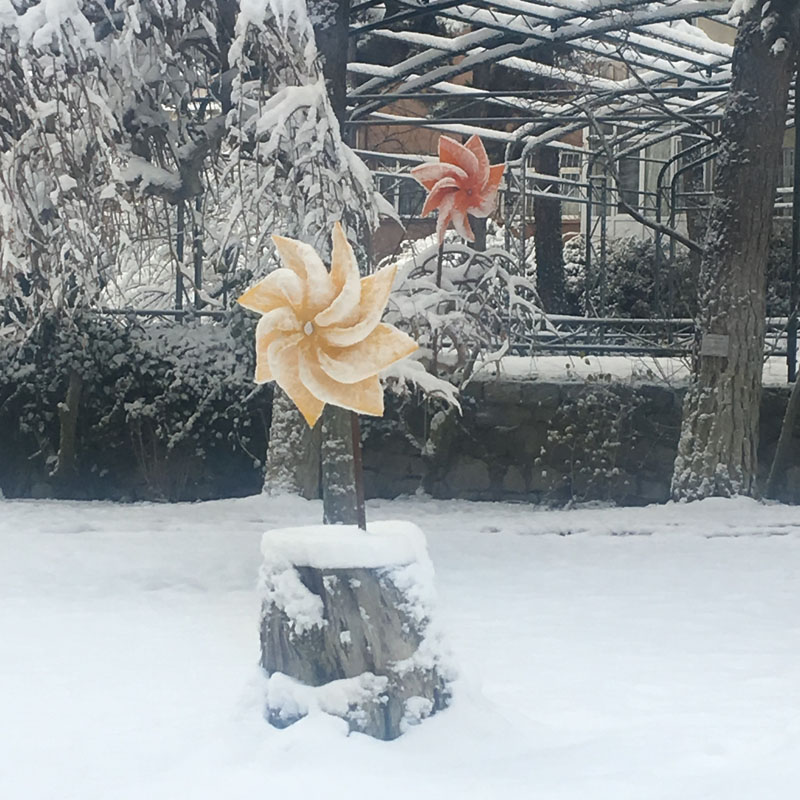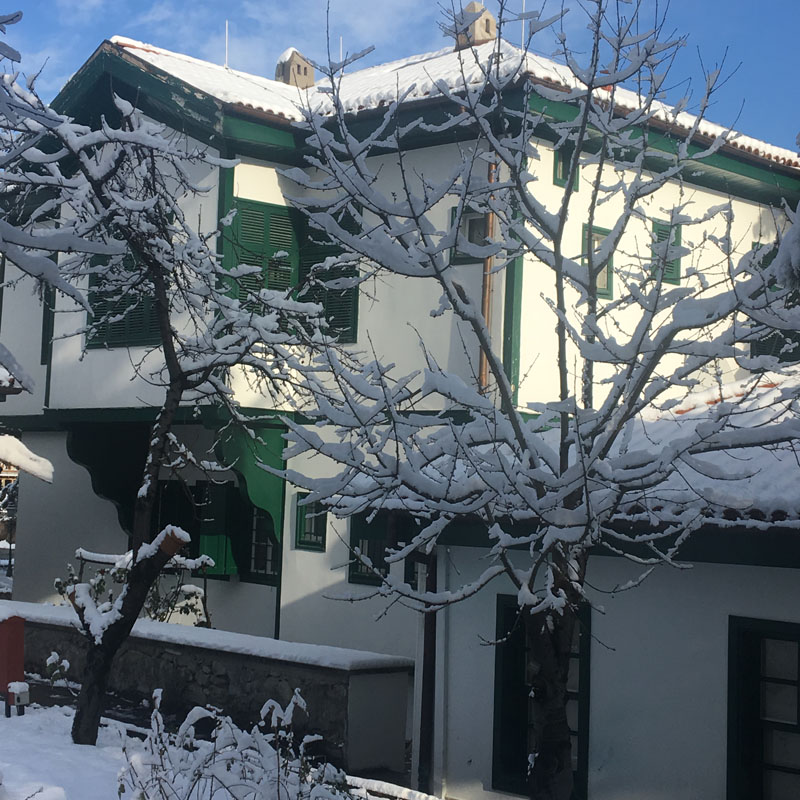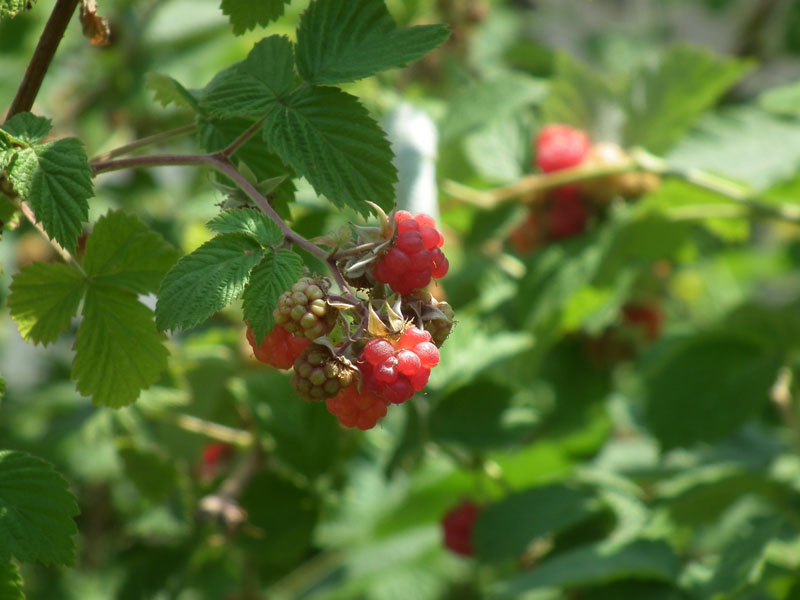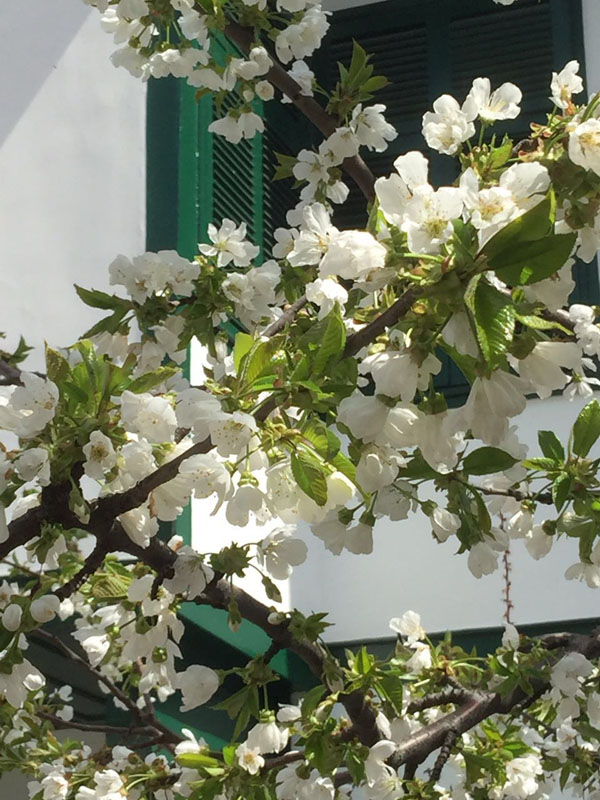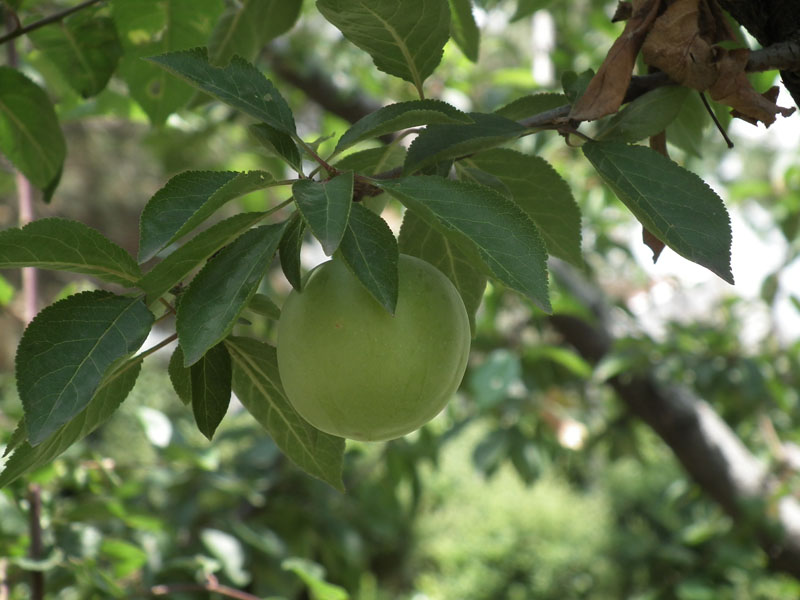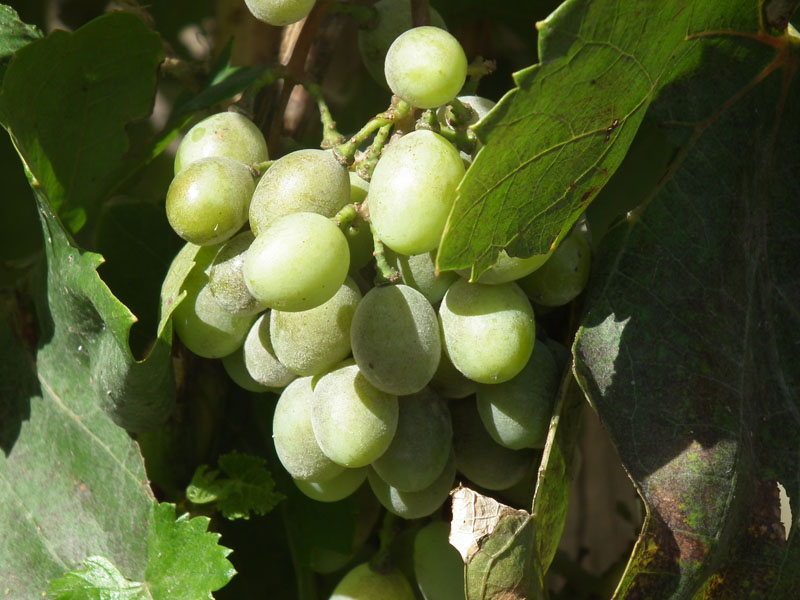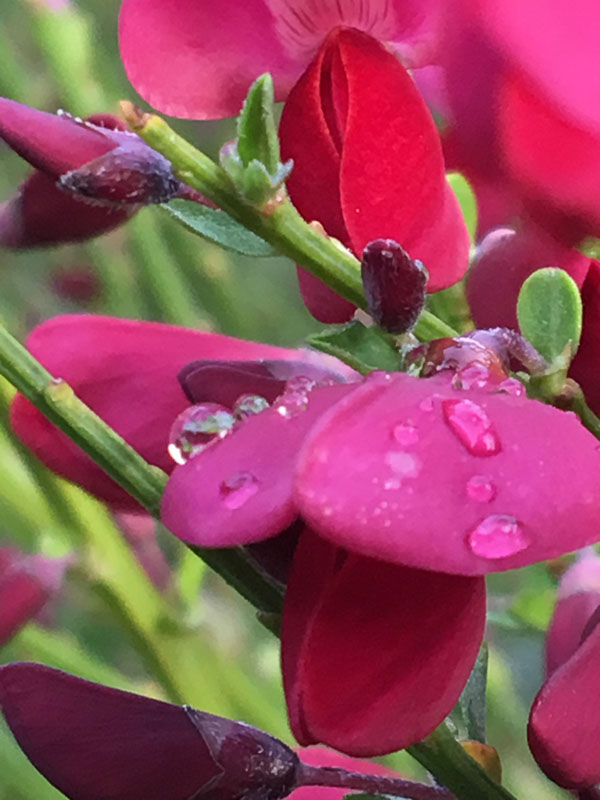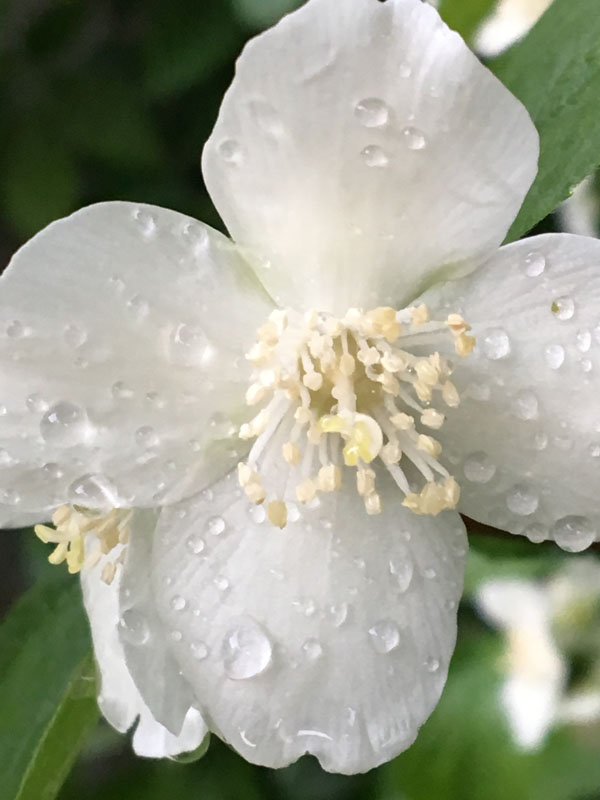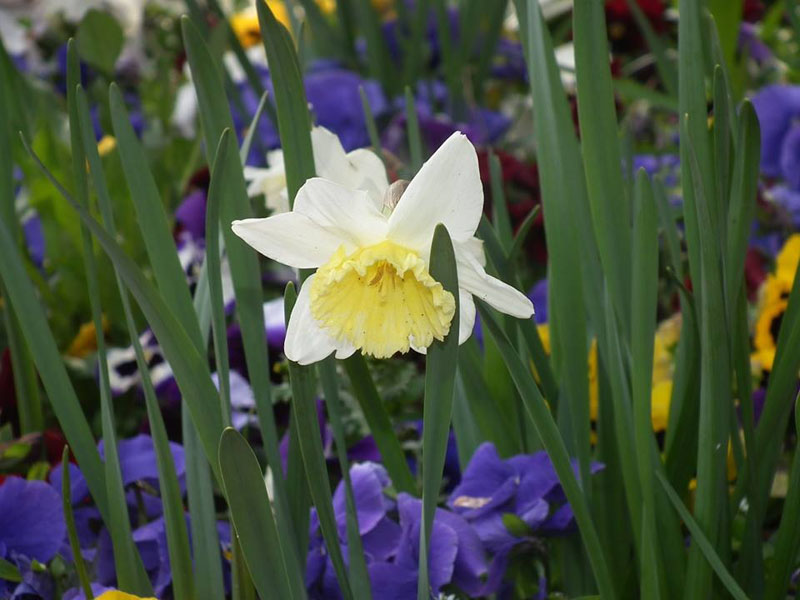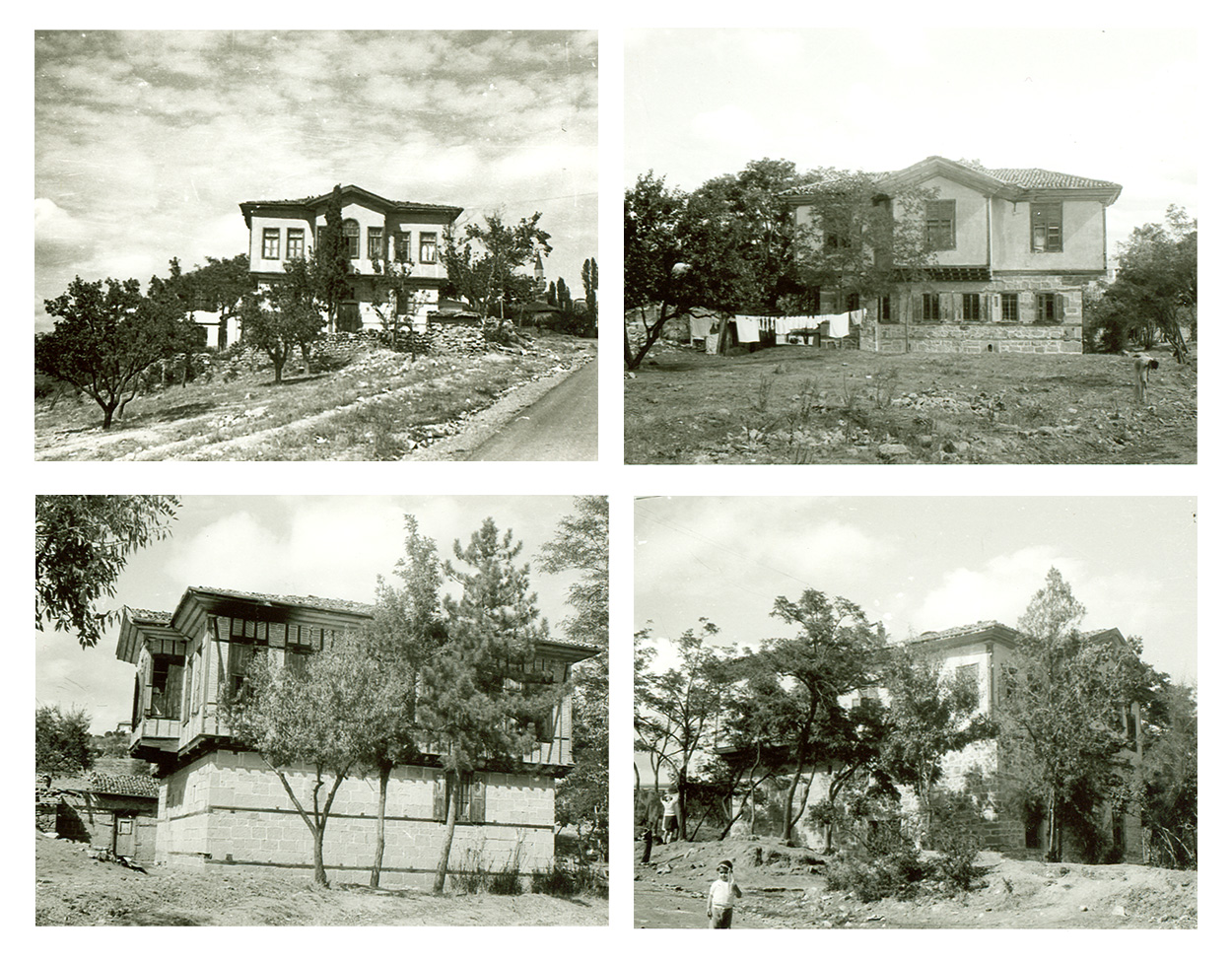
Just as many cities of Anatolia, Ankara also has a tradition of migrating to the orchard. During the winter, the inhabitants resided in Ulus and vicinity, which was inside city borders at the time, while in the summer they would migrate to their orchard homes in Çankaya, Dikmen, Esat, Etlik, and Keçiören.
Vehbi Koç explains the migration to the orchard house in his My Life Story, “In Ankara, there was a summer home tradition. Whether they were poor or rich, every family would move to the orchard for the summer. […] Depending on their wealth, the families owned single or double horse carriages. We also had an orchard. We would move to our orchard, which was located in the area called Çoraklık, near Keçiören. Çoraklık was mostly home to Muslims such as us. Mostly Catholics and Armenians lived in the nearby Keçiören. Their orchards were very well kept, and their beautiful buildings and gardens were noticeable. Wealthy Christians would go to their summer homes in Keçiören, Etlik, and Çankaya. Only the Jews did not have an orchard tradition.”
These orchard houses where the inhabitants of Ankara spent their summers were established in the center of a large orchard or garden, and they had a simple and distinctive geometry of basic forms and compositions. These houses had two or three levels and were built on a plan known as “karnıyarık,” with rooms that opened onto an Central Hall. The architecture of orchard houses generally emphasized comfortable living and was free of ornamentation. In addition to the main dwelling, the orchard estate would feature a well, a fountain and basin, a stable, a sheepfold, and a smaller structure used as a barn, the orchard, and fruit and vegetable gardens.
This annual migration to orchard houses which started in the spring would be reversed during the fall, as winter provisions were prepared and families moved out of orchard houses. The orchard lifestyle not only offered a chance of renewal for families and individuals, but it was also a small-scale production effort involving preparation for winter.
The tradition of seasonal migration to the orchard houses continued in Ankara until the end of the 1950s. After World War II, social and economic changes shifted the focus of lifestyle and the tradition of orchard houses gradually faded. With the rapid increase of population and the growing demand for housing, these low-density large open orchards lands were repurposed as new residential neighborhoods.
The last surviving orchard houses are important witnesses which help shed light on both the physical and the social qualities of Ankara in the 19th and early 20th century, and they reflect the tradition of “life in the orchard house,” which was an integral part of the lifestyle of the era.
The Garden
In the garden of the Orchard House where VEKAM’s main offices are located covering 8,500 square meters, there are 46 types of tress, 23 of which are fruit trees, 16 ornamental plants, and a token vineyard where various types of Ankara grapes are cultivated.
VEKAM’s garden features 7 of the 54 scotch fir trees of Ankara and dozens of black pine trees, which were all planted by Vehbi Koç. One scotch fir and one black pine have been registered in 2005 as natural cultural heritage.
Fruit Trees
Armut (Kışlık) / Pyrus communis
Armut (Yazlık) / Pyrus communis
Ayva / Cydonia vulgaris
Badem / Prunus amygdalus
Beyaz Dut / Morus alba
Can Eriği / Prunus cerasifera
Ceviz / Juglans regia
Dağ Eriği(Çakal Eriği) / Prunus spinosa
Elma / Malus communis
Hünnap(Ünnap) / Ziziphus vulgaris
Ihlamur /Tilia cordata
İncir / Ficus carica
Kara Dut / Morus nigra
Kayısı / Prunus armeniaca
Kestane / Castanea sativa
Kırmızı Kiraz / Prunus avium
Muşmula / Mespilus germanica
Nar / Punica granatum
Sarı Kiraz / Prunus avium
Trabzon Hurması / Diospyros kaki
Şeftali / Prunus persica
Vişne / Prunus cerasus
Yemişyen (Yemşen) / Crateagus orientalis
Other Trees
Ak Kavak / Populus alba
Altuni Mazı / Thuja orientalis aurea
At Kestanesi / Aesculus hippocastanum
Atlas Sediri / Cedrus atlantica
Çınar / Platanus orientalis
Çit Mazısı / Thuja orientalis
Defne / Laurus nobilis
Huş / Betula alba
İğde / Eleagnus angustifolia
Kara Çam / Pinus nigra
Leylak / Syringa vulgaris
Mavi Ladin / Picea pungens glauca
Mazı / Thuja orientalis
Meşe / Quercus robur
Mürver / Sambucus nigra
Orman Sarmaşığı / Hedera helix
Piramit Mazı / Thuja orientalis pyranidaus
Porsuk Çam / Taxus baccata
Sabin Ardıcı / Juniperus sabina
Sarı Çam / Pinus sylvestris
Sedir Çam / Cedrus atlantica
Top Akasya / Robinia pseudoacaccia umbracuifera
Yeşil Ladin / Picea pungens
Ornamental Plants
Ateş Çalısı / Pyracantha coccinea
Amerikan Sarmaşığı / Parthenocissus quinquefolia
Berberis / Berberis thundbergii
Beyaz İnci / Symphoricarpos albus
Çit Ligustrum (Kurt Bağrı) / Ligustrum vulgare
Filbahri / Philadelphus
Forsitya(Güneş Çalısı)/Forsythia intermedia
Frambuaz / Rubus idaeus
Gül / Rosa damascena
Hanımeli / Lonicera tatarica
İspirya (Keçi Sakalı) / Spiraea vanhouttei
Japon Ayvası / Cydonia japonica
Lükstrum / Ligustrum vulgare
Mor Salkım / Wisteria sinensis
Mürver / Sambucus nigra
Şimşir / Buxus sempervirens (10 adet)
Grape Types
• Ak Püskül / Vitis vinifera L.
• Çavuş / Vitis vinifera L.
• Gül Üzümü / Vitis vinifera L.
• Hasandede / Vitis vinifera L.
• Kalecik Karası (Klon 18)/ Vitis vinifera L.
• Kalecik Karası (Klon 19)/ Vitis vinifera L.
• Kalecik Karası (Klon 21) / Vitis vinifera L.
• Kara Gevrek / Vitis vinifera L.
• Narince / Vitis vinifera L.
• Söbe Kara / Vitis vinifera L.
• Sungurlu / Vitis vinifera L.

